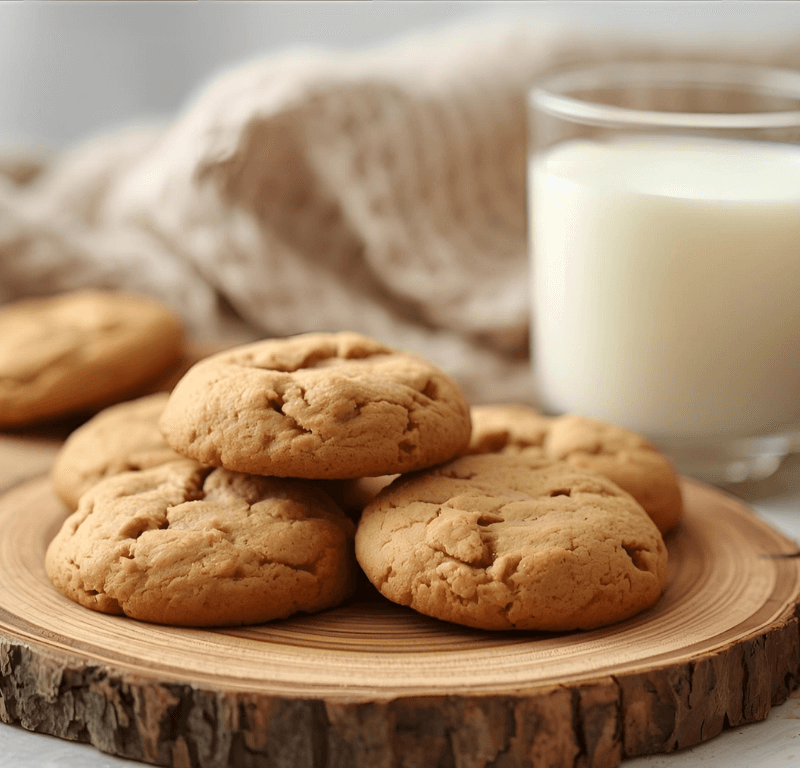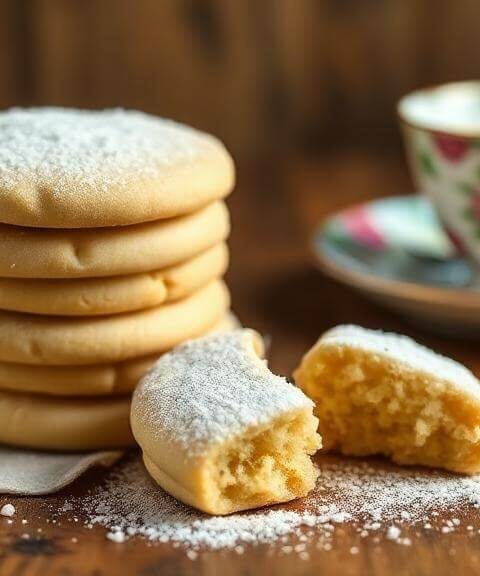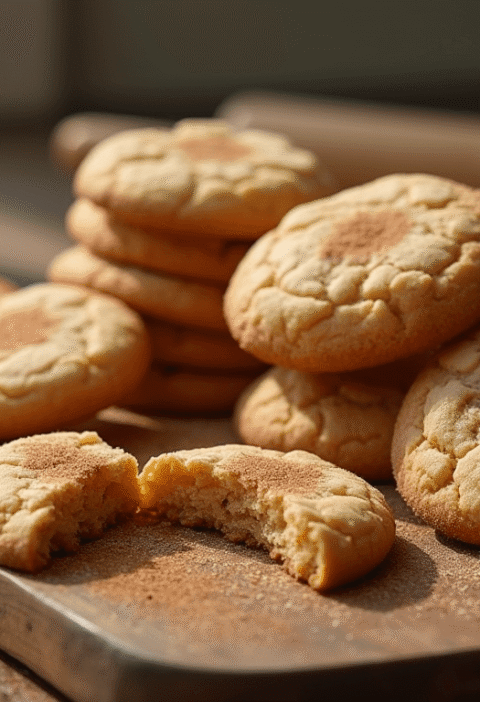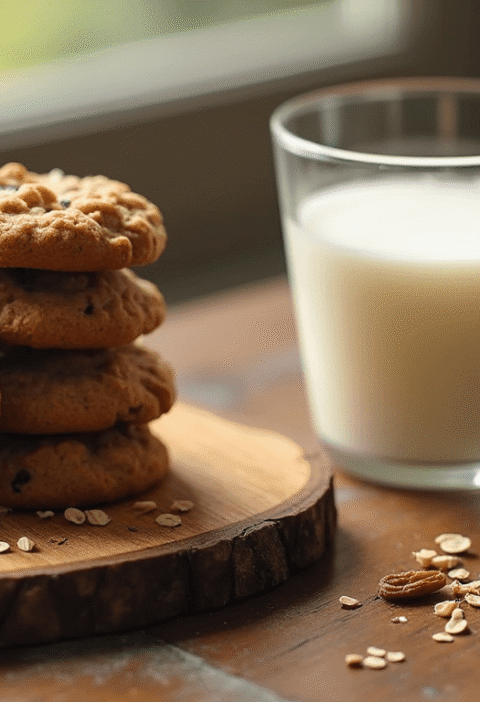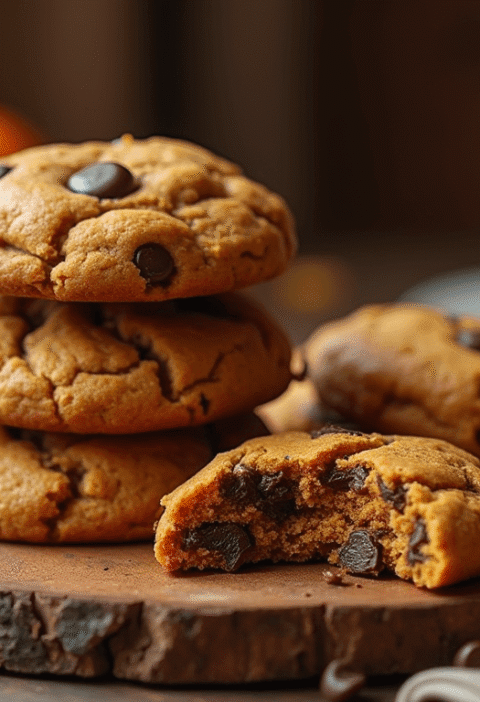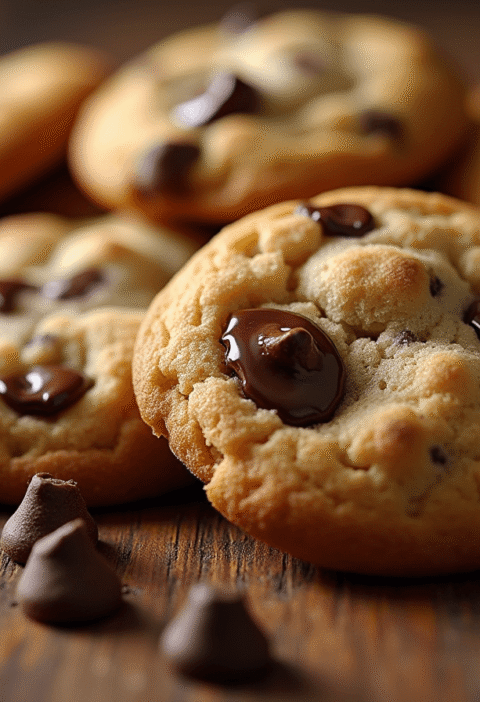Did you know that approximately 60% of breastfeeding mothers experience concerns about milk supply during the first three months postpartum? If you’re a nursing mom searching for natural ways to support your breastfeeding journey, lactation cookies might be the delicious solution you’ve been looking for. These specially formulated treats combine traditional galactagogues—ingredients believed to promote milk production—with the comfort of homemade cookies that actually taste amazing. Unlike typical lactation cookies that can be dry, bland, or overwhelmingly earthy, this recipe creates soft, chewy, and naturally sweet cookies loaded with oats, flaxseed, brewer’s yeast, and chocolate chips. Whether you’re navigating the challenges of new motherhood, returning to work while pumping, or simply want nutritious snacks that support your breastfeeding goals, these lactation cookies provide both nourishment and convenience in every satisfying bite.
Ingredients
For the Cookie Base:
- 3 cups (270g) old-fashioned rolled oats – The cornerstone galactagogue rich in iron and fiber (quick oats work but provide less texture)
- 1½ cups (188g) whole wheat flour – Adds nutrition and heartiness (substitute with all-purpose flour or gluten-free blend)
- 3 tablespoons ground flaxseed meal – Packed with omega-3s and phytoestrogens that support lactation
- 3 tablespoons brewer’s yeast – The key galactagogue ingredient with B-vitamins and protein (find at health food stores)
- 1 teaspoon baking soda – Provides lift and tender texture
- ½ teaspoon salt – Balances sweetness and enhances flavors
- 1 teaspoon ground cinnamon – Adds warmth and natural sweetness without sugar
For the Wet Ingredients:
- 1 cup (226g) unsalted butter, softened – Creates rich, satisfying texture (coconut oil works for dairy-free)
- 1 cup (220g) packed brown sugar – Provides moisture and deep molasses flavor
- ½ cup (100g) granulated sugar – Balances texture and sweetness
- 2 large eggs, room temperature – Binds ingredients and adds protein
- 2 tablespoons blackstrap molasses – Rich in iron, calcium, and supports milk production
- 2 teaspoons pure vanilla extract – Enhances overall flavor profile
Mix-Ins:
- 1½ cups (255g) semi-sweet or dark chocolate chips – Makes these cookies genuinely enjoyable (use dairy-free if needed)
- Optional: ½ cup (60g) chopped walnuts or almonds – Adds healthy fats and satisfying crunch
Ingredient Notes for Nursing Moms:
- Brewer’s yeast has a slightly bitter, nutty flavor—the chocolate chips balance it perfectly
- Blackstrap molasses provides iron to support postpartum recovery
- Organic ingredients are ideal when breastfeeding, though not essential

Timing
Preparation Time: 15 minutes (simple mixing, no special equipment needed)
Baking Time: 12-14 minutes per batch
Cooling Time: 10 minutes
Total Time: 50 minutes for 3-4 dozen cookies
This efficient recipe takes just 50 minutes from start to finish—33% faster than commercial lactation cookie mixes that require multiple steps. Perfect for busy new moms who need quick, nutritious solutions between feeding sessions and nap times.
Step-by-Step Instructions
Step 1: Prepare Your Baking Space
Preheat oven to 350°F (175°C) and line two large baking sheets with parchment paper or silicone mats. Position racks in the upper and lower thirds of your oven. Having everything ready before starting makes the process smoother when you’re working around baby’s schedule.
Step 2: Combine Dry Ingredients
In a large bowl, whisk together oats, flour, ground flaxseed, brewer’s yeast, baking soda, salt, and cinnamon until evenly distributed. This thorough mixing ensures the brewer’s yeast flavor disperses throughout rather than concentrating in certain cookies. The flaxseed adds nutty depth while the cinnamon provides natural sweetness.
Step 3: Cream Butter and Sugars
In a separate large bowl or stand mixer, beat softened butter with both sugars on medium speed for 3-4 minutes until light, fluffy, and pale in color. This aeration creates cookies that are tender rather than dense—important when using whole wheat flour and heavy ingredients like oats.
Step 4: Add Eggs and Flavorings
Reduce mixer speed to low and add eggs one at a time, beating well after each addition. Mix in molasses and vanilla extract until fully incorporated. The molasses adds moisture and a subtle caramel flavor that complements the brewer’s yeast beautifully. Don’t worry if the mixture looks slightly curdled—it will come together perfectly.
Step 5: Incorporate Dry Mixture
Add the dry ingredient mixture to the wet ingredients in three additions, mixing on low speed just until combined after each addition. Avoid overmixing, which develops gluten and creates tough cookies. The dough should be thick and slightly sticky.
Step 6: Fold in Mix-Ins
Using a sturdy spatula or wooden spoon, fold in chocolate chips and nuts (if using) until evenly distributed throughout the dough. The generous amount of chocolate makes these lactation cookies taste like a treat rather than a health supplement.
Step 7: Portion and Shape
Using a cookie scoop or tablespoon, drop rounded portions of dough onto prepared baking sheets, spacing them 2 inches apart. Each cookie should use about 2 tablespoons of dough. For consistency, a 1.5-tablespoon cookie scoop ensures uniform size and even baking.
Step 8: Bake to Perfection
Bake for 12-14 minutes, rotating pans halfway through for even browning. Cookies are done when edges are golden and centers still appear slightly soft. They’ll continue firming as they cool. Overbaking creates dry, crumbly cookies—you want these soft and chewy for maximum enjoyment.
Step 9: Cool and Set
Let cookies rest on baking sheets for 5 minutes to set properly, then transfer to wire racks to cool completely. This resting period allows the structure to firm while maintaining that desirable chewy texture throughout.
Step 10: Store for Convenience
Once completely cooled, store cookies in an airtight container. These keep well at room temperature for up to a week, making them perfect for grab-and-go snacking throughout your breastfeeding journey.

Love cake? 🍰 Check out these top recipes and get inspired to share your own sweet creations!
How To Make Cake Pops: 5 Easy Steps For Beginners
Cake Pop Magic: How 3 Ingredients Make Them Amazing
How To Make The Perfect Red Velvet Cake In 5 Steps
Banana Bread Recipe: 5-Ingredient Magic For Quick & Easy Baking
Pineapple Upside Down Cake: How To Make It In 6 Simple Steps
Nutritional Information
Per Cookie (based on 42 cookies, with chocolate chips):
- Calories: 145
- Total Fat: 7g (9% DV)
- Saturated Fat: 4g (20% DV)
- Cholesterol: 20mg (7% DV)
- Sodium: 85mg (4% DV)
- Total Carbohydrates: 19g (7% DV)
- Dietary Fiber: 1.5g (5% DV)
- Total Sugars: 11g
- Protein: 3g (6% DV)
- Iron: 1.2mg (7% DV)
- Calcium: 15mg (1% DV)
Key Nutritional Benefits for Breastfeeding:
- High in complex carbohydrates for sustained energy
- Good source of iron to support postpartum recovery
- Contains omega-3 fatty acids from flaxseed
- B-vitamins from brewer’s yeast support milk production
- Protein helps with tissue repair and satiety
Note: Nutritional information is approximate and based on standard ingredient measurements. Actual values may vary based on specific brands and modifications used.
Healthier Alternatives for the Recipe
Reduce Sugar: Cut both sugars by ¼ cup each to reduce sweetness by 20% while maintaining texture. The natural sweetness from molasses and chocolate compensates well.
Increase Protein: Add 2-3 tablespoons of vanilla protein powder or collagen peptides (safe for breastfeeding) to boost protein content for postpartum recovery.
Vegan/Dairy-Free Version: Replace butter with coconut oil or vegan butter, use flax eggs (1 tablespoon ground flaxseed + 3 tablespoons water per egg), and choose dairy-free chocolate chips.
Gluten-Free Adaptation: Substitute with certified gluten-free oats and a 1:1 gluten-free flour blend. Add ¼ teaspoon xanthan gum if your blend doesn’t contain it.
Lower Glycemic Option: Replace half the sugar with coconut sugar or use date paste for natural sweetness with more nutrients and fiber.
Nut-Free Version: Omit nuts and add ½ cup unsweetened shredded coconut, dried fruit, or extra chocolate chips for texture and flavor variation.
Boost Galactagogue Power: Increase brewer’s yeast to 4 tablespoons or add 1 tablespoon of fenugreek powder for enhanced milk-supporting properties (consult your healthcare provider first).
Add Superfood Boost: Mix in 2 tablespoons of chia seeds or hemp hearts for additional omega-3s, protein, and minerals beneficial during lactation.
Serving Suggestions
Morning Routine: Pair 2-3 cookies with your morning coffee or tea and a glass of water for a satisfying breakfast that supports hydration and milk production during those early feeding sessions.
Pumping Companion: Keep a container of cookies in your work bag or pumping station for convenient, one-handed snacking that provides energy and lactation support during breaks.
Midnight Feeding Fuel: Stash cookies on your nightstand with a water bottle for those overnight nursing sessions when you need quick, quiet nourishment without leaving baby.
Meal Prep Strategy: Portion cookies into individual bags with almonds, cheese, or fruit for complete grab-and-go snack packs that provide balanced nutrition throughout the day.
Gift for New Moms: Package a dozen cookies in a decorative tin with the recipe card as a thoughtful gift for breastfeeding friends—practical support that tastes homemade and delicious.
Postpartum Energy Boost: Crumble cookies over Greek yogurt with fresh berries for a protein-packed breakfast bowl that satisfies sweet cravings while delivering sustained energy.
Freezer Stash: Pack cookies for hospital bag or freezer before baby arrives, ensuring you have ready-made nutrition during those first chaotic weeks when cooking feels impossible.
Common Mistakes to Avoid
Using the Wrong Oats: Instant oats become mushy and create pasty texture, while steel-cut oats are too firm. Old-fashioned rolled oats provide the ideal chewy texture and proper consistency.
Skipping Brewer’s Yeast: While it has a distinct flavor, brewer’s yeast is the primary galactagogue in lactation cookies. Without it, these are simply oatmeal cookies. The chocolate chips effectively mask any bitterness.
Overmixing the Dough: Studies show overmixed dough develops excessive gluten, creating tough, cake-like cookies. Mix just until ingredients combine for optimal tender texture that nursing moms appreciate.
Overbaking for Crispness: These cookies should be soft and chewy, not crunchy. Removing them when centers still look slightly underdone ensures they maintain moisture—especially important since you’ll be eating them frequently.
Not Measuring Flaxseed Correctly: Ground flaxseed meal and whole flaxseeds have different volumes. This recipe requires ground flaxseed for proper distribution and digestibility of omega-3 fatty acids.
Substituting Brewer’s Yeast Incorrectly: Nutritional yeast is NOT the same as brewer’s yeast and won’t provide galactagogue benefits. Only brewer’s yeast contains the specific compounds that support lactation.
Storing Improperly: Flaxseed can go rancid quickly. Store cookies in airtight containers away from heat and light, or freeze for longer-term storage to maintain freshness and nutritional value.
Storing Tips for the Recipe
Room Temperature Storage: Keep cookies in an airtight container at room temperature for up to 7 days. Layer parchment paper between cookies to prevent sticking and maintain texture.
Refrigerator Storage: Extend freshness to 2 weeks by refrigerating cookies in airtight containers. The cold actually makes them slightly chewier and more satisfying when you need a quick grab.
Freezing for Convenience: Freeze baked cookies for up to 3 months in freezer-safe bags or containers. Layer parchment paper between cookies to prevent freezing together. Thaw at room temperature for 15 minutes or microwave for 10-15 seconds.
Freezing Unbaked Dough: Scoop cookie dough into portions, freeze on a baking sheet until solid, then transfer to freezer bags. Bake directly from frozen, adding 2-3 extra minutes—perfect for fresh cookies whenever needed.
Make-Ahead Strategy: Prepare double batches during pregnancy’s third trimester and freeze. Having a stash ready postpartum provides stress-free nutrition when adjusting to life with a newborn.
Maintaining Freshness: Add a slice of bread to your storage container to help cookies retain moisture. The cookies absorb moisture from the bread, staying soft and chewy longer.
Portion Control: Pre-portion cookies into individual bags with 2-3 cookies each for grab-and-go convenience. This helps with mindful eating and ensures you have snacks ready for outings.
Travel-Friendly Packing: Pack cookies in rigid containers or tins when traveling to prevent crushing. They’re perfect for trips since they don’t require refrigeration and provide sustained energy.
Conclusion
These lactation cookies combine science-backed galactagogues with delicious, wholesome ingredients to create treats that genuinely support your breastfeeding journey. The blend of oats, flaxseed, brewer’s yeast, and molasses provides nutrients essential for milk production, while chocolate chips ensure they taste indulgent rather than medicinal. Easy to make, convenient to store, and satisfying to eat, these cookies offer nursing mothers practical nutrition.
Ready to support your breastfeeding journey with delicious, nutritious lactation cookies? Try this recipe today and experience the difference real ingredients make! Share your results in the review section below—we love hearing how these cookies help nursing moms. Leave a comment with your favorite variations or questions, and subscribe to our blog for more evidence-based recipes, postpartum nutrition tips, and motherhood support delivered to your inbox weekly.

FAQs
Do lactation cookies actually work to increase milk supply?
While individual results vary, the galactagogue ingredients in lactation cookies—particularly oats, brewer’s yeast, and flaxseed—have traditional use supporting lactation. Research shows oats contain beta-glucan that may boost prolactin (milk-production hormone). However, cookies work best alongside proper hydration, adequate rest, and frequent nursing or pumping.
How many lactation cookies should I eat per day?
Most lactation consultants recommend 2-3 cookies daily as part of a balanced diet. Start with 1-2 cookies to assess how your body responds, then adjust based on your needs. Remember, cookies supplement but don’t replace proper nutrition, hydration, and regular feeding schedules.
When should I start eating lactation cookies?
You can begin eating lactation cookies anytime during your breastfeeding journey—immediately postpartum, when returning to work, during growth spurts, or whenever you feel your supply needs support. Some women also eat them during the third trimester to prepare their bodies for lactation.
Can I eat lactation cookies if I’m not breastfeeding?
Yes, these cookies are safe and nutritious for anyone! The ingredients provide excellent nutrition—oats, flaxseed, and brewer’s yeast offer fiber, omega-3s, and B-vitamins beneficial for everyone. However, if you’re not breastfeeding, the galactagogue effects aren’t relevant.
Where can I buy brewer’s yeast for lactation cookies?
Find brewer’s yeast at health food stores, natural grocery stores like Whole Foods, or online through retailers like Amazon. Look for Lewis Labs or other quality brands specifically labeled “brewer’s yeast.” Store it in the refrigerator after opening to maintain freshness.
Can lactation cookies cause side effects?
Lactation cookies are generally safe, but some women experience minor gas or bloating from the fiber in oats and flaxseed initially. Brewer’s yeast rarely causes reactions. If you notice any adverse effects, reduce intake or consult your healthcare provider, especially if you have yeast sensitivities.
How long does it take for lactation cookies to work?
Most women who notice increased supply report changes within 24-48 hours of consistently eating lactation cookies. However, effects vary individually. For best results, eat cookies daily while maintaining hydration, regular nursing schedules, and adequate caloric intake.
Can I make lactation cookies without brewer’s yeast?
While you can omit brewer’s yeast, it’s one of the primary galactagogue ingredients. Without it, you’ll have nutritious oatmeal cookies but reduced lactation-supporting properties. If you can’t tolerate brewer’s yeast, consider increasing flaxseed or adding fenugreek (after consulting your healthcare provider).

